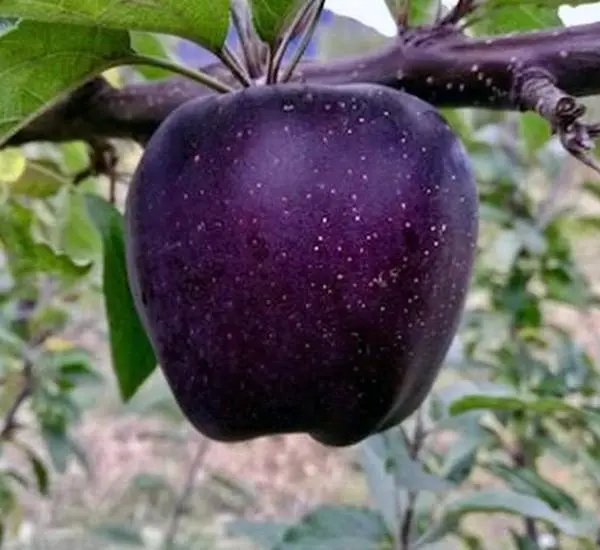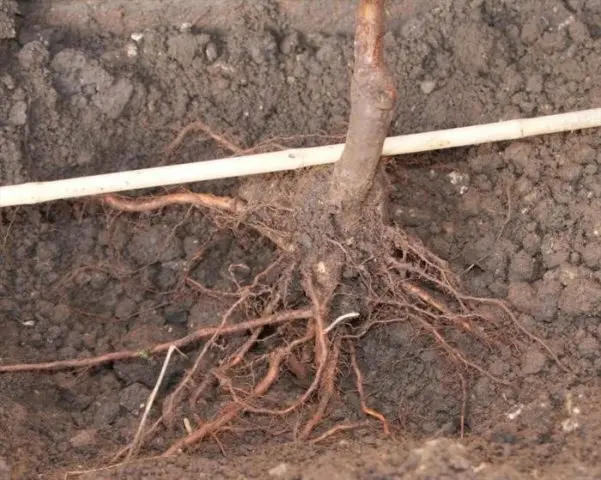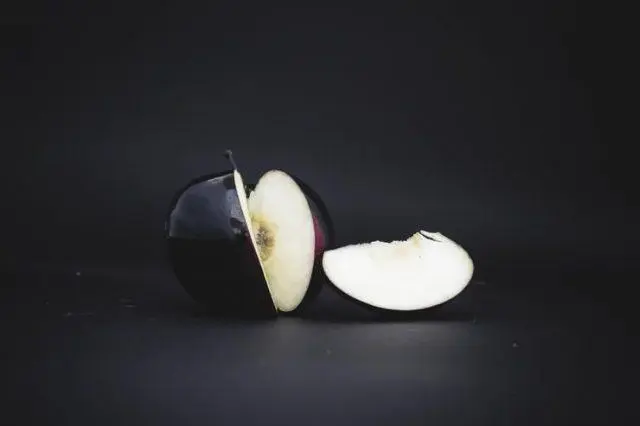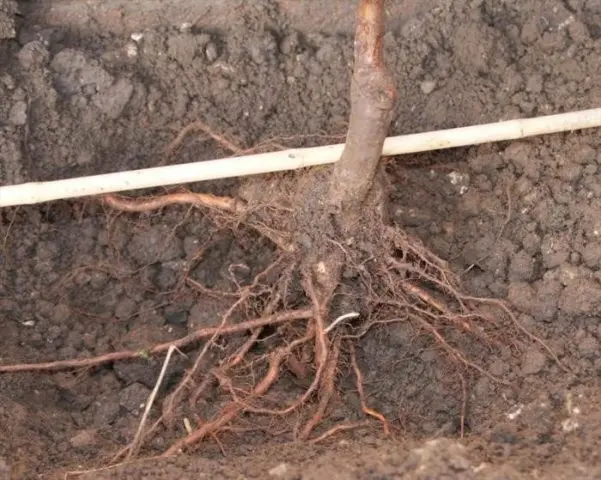Contents
Apple tree Black Diamond, or Black Diamond is a rare variety belonging to the elite varieties of culture. The unique dark purple color of the fruit attracts many gardeners, however, in order to obtain unusual apples, it is necessary to create specific conditions, which is why the variety remains a rarity in the gardens of our country.
History of breeding
The black diamond is a variety of which little is known about its origin. It is believed that its predecessor is the well-known throughout the world Red Delicious. On its basis, in 2009 or 2010, the Hua Niu variety was bred in New Zealand, the seedlings of which were subsequently transported to China. Thanks to the further work of Chinese farmers and the unique climate of the Tibetan highlands, where apple trees began to be cultivated, the characteristics of the variety have been significantly improved. A large amount of ultraviolet radiation in mountainous areas, combined with daily temperature fluctuations, caused the unusual black and purple color of Black Diamond apples.
Since 2015, this elite variety of apples has been on sale, the fruits could be purchased individually in individual packaging by appointment. Currently, there is an opportunity to buy seedlings and try to get fruits with an unusual color and excellent taste on your own.
Description of the apple tree Black diamond
The Black Diamond apple tree belongs to medium-sized varieties. The tree is characterized by rapid development, especially in the early years, before fruiting. It blooms in May with large pink flowers with a strong fragrance that attracts insects. The tree has a powerful branched root system, which allows it to extract water from the deep layers of the soil of a mountainous area.
tree appearance
Apple trees of the Black Diamond variety reach a height of 3-4 m, although experts recommend shaping pruning to limit their growth and get higher yields. The shoots of a young tree form an oval crown, while in adult specimens they deviate from the trunk and droop. The branches themselves are brown, with a greenish tint, strongly leafy. The leaf plate is medium in size, with pronounced serration. The leaf shape is oval with a sharp tip.

Fruits of an unusual color from afar resemble plums
Description of fruits
Black Diamond apples have an unusual dark purple skin color. However, such a rich color can be achieved only in climatic conditions that are as close as possible to the weather of the Tibetan highlands. An apple of this variety grown according to all the rules received 5 points for its appearance – the highest tasting score.
Black diamond apples are rounded, slightly elongated, with pronounced ribbing. Skin with a glossy sheen, dense.

Numerous subcutaneous dots of green or gray on the fruits of the Black Diamond are clearly visible.
The pulp is juicy, fragrant, snow-white, closer to the skin with purple or reddish streaks. The structure is fine-grained.
Apples are quite large, in some cases their weight can reach 250 g, but more often it is about 120 g.
Characteristic of the variety
According to Chinese farmers, the Black Diamond variety shows good yield and frost resistance and is resistant to diseases and pests. So far, sufficient data on the results of cultivating the variety in Our Country and European countries have not been accumulated, but there is reason to believe that they will not differ significantly.
Palatability
The fruits of this apple tree are characterized not only by their unusual appearance, but also by their outstanding taste. Out of 5 possible tasting points, Black Diamond received a score of 4,9. The taste of the pulp is dominated by sweetness and a pleasant light sourness is clearly traced.
Terms of maturation
Apples Black Diamond reach maturity from the second decade of August. It is noteworthy that even fruits that have reached technical ripeness differ in excellent taste.
Productivity
The first harvest of the Black Diamond apple tree can be expected in an average of 8–10 years. The tree enters the period of effective fruiting at the age of 12–14 years, then it is able to produce from 150 to 180 kg of apples.
Frost resistance of an apple-tree Black diamond
Apple tree Black Diamond is highly frost-resistant, tolerates winter temperatures down to -39°C. Gusty winds also do not pose a threat, however, a prolonged icy draft can lead to freezing of shoots.
Apple Pollinators Black Diamond
The variety Black Diamond is self-fertile, which means it does not need pollinators. In the inflorescences of this apple tree there is enough pollen, and insects attracted by the aroma of flowers provide effective self-pollination.
Growing regions
The variety is adapted to the climate of the Tibetan highlands, therefore it feels good in areas with similar climatic conditions, for example, in the Crimea or the North Caucasus. Its characteristics allow you to get an excellent harvest in the central part of Our Country and in the southern regions, but the color of the apples will not be so original. Plains apple trees will have the usual red, burgundy or purple color.
Disease resistance
Apple tree Black Diamond has a natural immunity to the most common fungal diseases. It is also noted for its resistance to pest damage.
Advantages and disadvantages
Despite the fact that the consumer properties of apples of this variety make it possible to use them in preparations, it is not customary to process the Black Diamond. The unique appearance and outstanding taste of this noble fruit can only be appreciated when consumed fresh.

The snow-white flesh of the apple The black diamond stands out strongly against the background of the dark skin, which gives the fruit an exotic look.
Pros:
- unique coloring;
- ability to grow in extreme conditions of high mountains;
- frost resistance and resistance to sudden temperature changes in a wide range;
- immunity against fungal diseases and crop pests;
- higher content of nutrients than other varieties;
- self-fertility;
- good transportability.
The disadvantages are:
- the need to create specific conditions for obtaining apples of the original color;
- the tree enters the fruiting period late.
How to plant
When growing an apple tree of this variety, it should be remembered that the more sunlight the tree receives, the darker the color of the fruit will be. The sunniest areas are suitable for the Black Diamond, it is better if they are located on the southwestern slopes.
The plant is practically undemanding to the composition of the soil, the main thing is that the substrate is light and loose.
Like most other fruit trees, the Black Diamond apple tree can be planted both in spring and autumn, however, many gardeners recommend autumn planting, 2-3 weeks before frost.
Between seedlings of the Black Diamond apple tree maintain a distance of at least 150 cm.
For planting, it is important to properly prepare the pit:
- In advance, at least a month in advance, they dig a hole with a diameter of 80–100 cm.
- Add 200 g of superphosphate to the soil mixture and pour it to the bottom.
- Lay a layer of drainage, spill well with water and leave until planting.
The seedling is placed in a hole and buried, leaving the root collar above the soil surface.

In order not to accidentally deepen the neck of the seedling, to determine the level of the soil, you can put an even stick on the edges of the pit
Next, the plant is watered abundantly, the soil around the trunk is mulched.
Care instructions
Although the Black Diamond variety is noticeably different in the exotic appearance of the fruit, the apple tree is unpretentious and does not require special care. She, like other horticultural crops, needs the following activities:
- loosening, which is enough to carry out once a season;
- removal of weeds as needed;
- moderate watering during a long drought;
- forming and sanitary pruning;
- regular fertilizing with mineral and organic fertilizers.
Collection and storage
Apples of this variety begin to be harvested as they are technically ripe. The harvest period lasts from mid-August to early September. The fruits collected at this time are ready to eat and will be stored longer. All the rules for picking apples are also valid for the Black Diamond, however, in order to preserve the flawless appearance of these valuable fruits as much as possible, they must be removed from the tree with particular care.
Dry fruits without signs of damage are placed in storage. In a cool place, they retain their consumer properties for up to three months.
Conclusion
The Black Diamond apple tree is a variety that is not common in our country due to the specific conditions necessary to obtain a VIP class crop. Nevertheless, seedlings of this crop can be found on sale and successfully grown in most of Our Country. The resulting crop will differ only in the color of the fruit.









